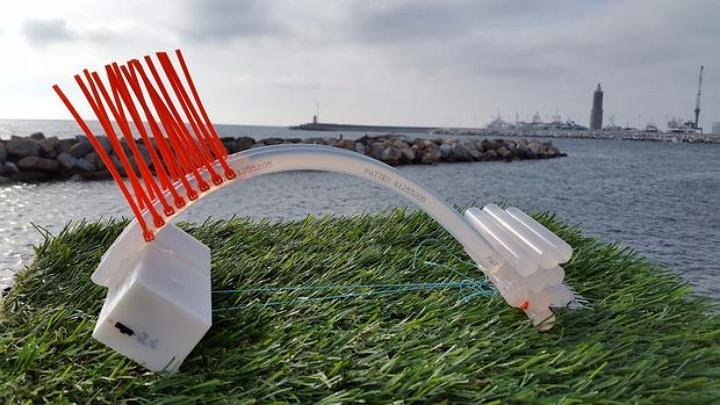
“Okay, it’s not exactly soft – you will argue – but it has some soft parts; the glue sticks,” Mihaylov says. “Not only they are soft, but they have a very important feature – they form the body of the robot and they act as springs. It’s important to realize that their springy quality is used to drive the robot forward.”
Mihaylov says his ingenious robot is able to move because the tail section creates very little friction with the ground as it moves in one direction, and high friction when it moves in the opposite direction.
“The tail is simply pulled forwards by the two ropes,” Mihaylov says. “Then they release, and the springy quality of the glue sticks pushes the front forward while the tail is stuck to the ground.”
He says it’s a pretty simple collection of items that makes the robot work; some thin nylon rope, the hot glue sticks, a servo or two, an Arduino Uno, Mini or any other microcontroller capable of driving a servo and a battery.
Once you have your bill of materials in place, connect the servo to the micro-controller and power supply. Mihaylov used two servos to provide more power on the ropes, but depending on the servos you use, you might be able to get by with one. Mihaylov has helped make programming the microcontroller easier by attaching the code he used to the Instructable he wrote on the project.
The rest is simply a matter of 3D printing the boxes that house the microcontroller, battery and the servo and then using the diagram Mihaylov provides as a reference to put the entire shebang together.
You may now feel free to race against similar robots or just creep out your friends during a garden party.
“It’s able to crawl over artificial grass, smooth plastic and rough terrain,” Mihaylov says. “I had to add spikes to the tail to make the friction greater on the grass terrain. It isn’t rocket science, but it is cool.”
What do you think of Pavel Mihaylov’s 3D printed Glue Stick Robot? Let us know in the Soft Robot Out of Hot Glue Sticks forum thread on 3DPB.com. Check out the videos below.